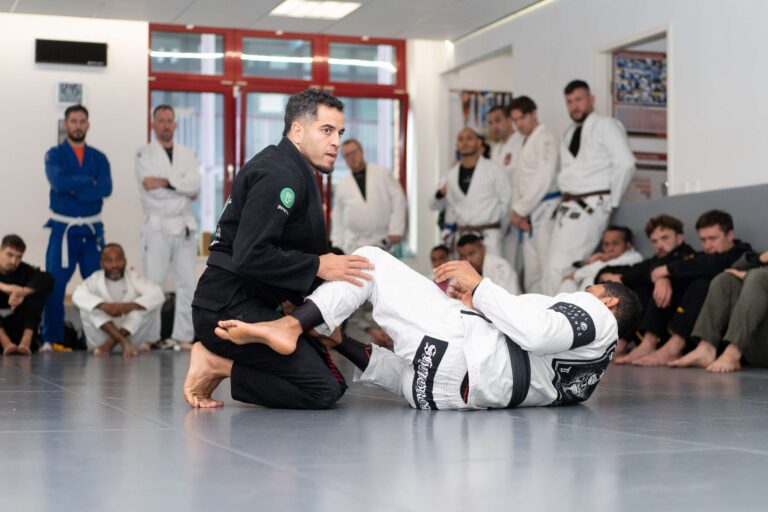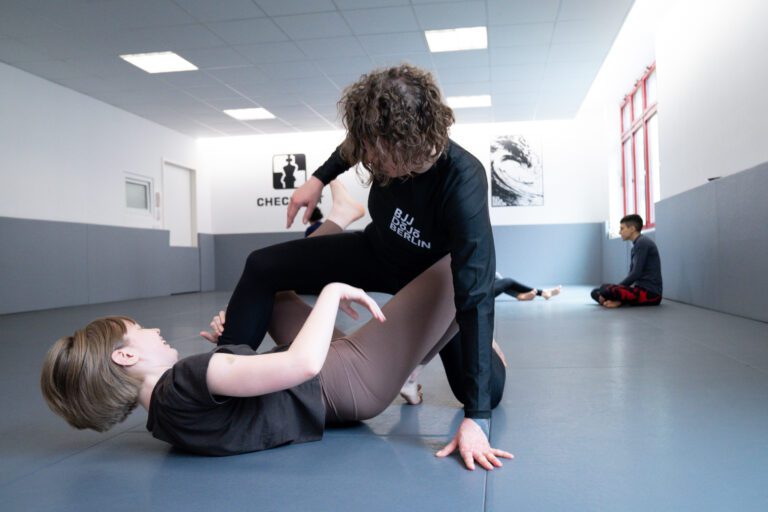A fundamental technique
One of the techniques I remember from when I was a white belt in BJJ. The knee pin pass is an excellent example of the necessary steps of a passing strategy, especially regarding the hip and cross-face controls.
Although it is a beginner-level pass, it can also be adapted and used against the higher levels. The fundamentals don’t change, and if you apply the sequence correctly and adjust it into your style, this also works against a black belt.
You can watch the video below and follow the instructions with more details in this article.
Here are the most relevant steps to execute a knee pin pass.
#1 Control the hips
Approach the open guard and make sure you have a solid posture. Next, control the hips indirectly by gripping inside the knee and in the flank region (somewhere between the ribs and Hip bone can work). Finally, you neutralize the hip mobility by applying the right balance and keeping the opponent’s lower back pinned and flat on the ground.

#2 Pin Uke’s legs
Only to let go of the grip on your Uke’s knees only after you pin his thigh with your shin. Your knee is on the ground, and your hook is under his cauf. I like to stretch his leg while compressing my knee against his thigh.

On the other side, you must keep your knee pushing against your Uke’s thigh. Besides creating discomfort and neutralizing the hips, this step also prevents him from bringing you in the half-guard.
One crucial detail is staying low and connecting your chest with his chest. Lowering your base and dropping chest-on-chest should happen simultaneously; otherwise, your Uke might frame you.
#3 Cross-face control
After securing the hips, it is time to achieve head control. You must avoid swinging your arm over to reach your Uke’s neck; this is a bad habit in BJJ because it exposes too much of your limbs. A more precise way is sneaking your hand tight on his body (Watch the video). A cross-face control will never mean just holding your Uke’s shoulder, neck, or arm. You must reach under his Scapula and pull his head closer to your upper body. Only now can you lean your weight on your shoulder and apply proper control. Remember that your shoulder needs to be on your Uke’s neck, not on the jaw.

#4 Windshield Wiper
It is time to pass your legs over the line of the hips. You must be careful not to move the wrong leg first and land on the half-guard. You always have to move the far-side leg over the near side one in a windshield wiper move, and then use the same leg as a hook to move your ukes lower body in the opposite direction.


#5 Stabilizing
The mobility of your hips will help you stabilize a head and arm side control. For that, you must switch your hips and isolate his nearside arm over your thigh and only then rest in your favorite base.


Conclusion
Remember that Jiu-Jitsu is about progression. Getting to this position is your first step, but you must move further to the mount or apply any submission hold.



